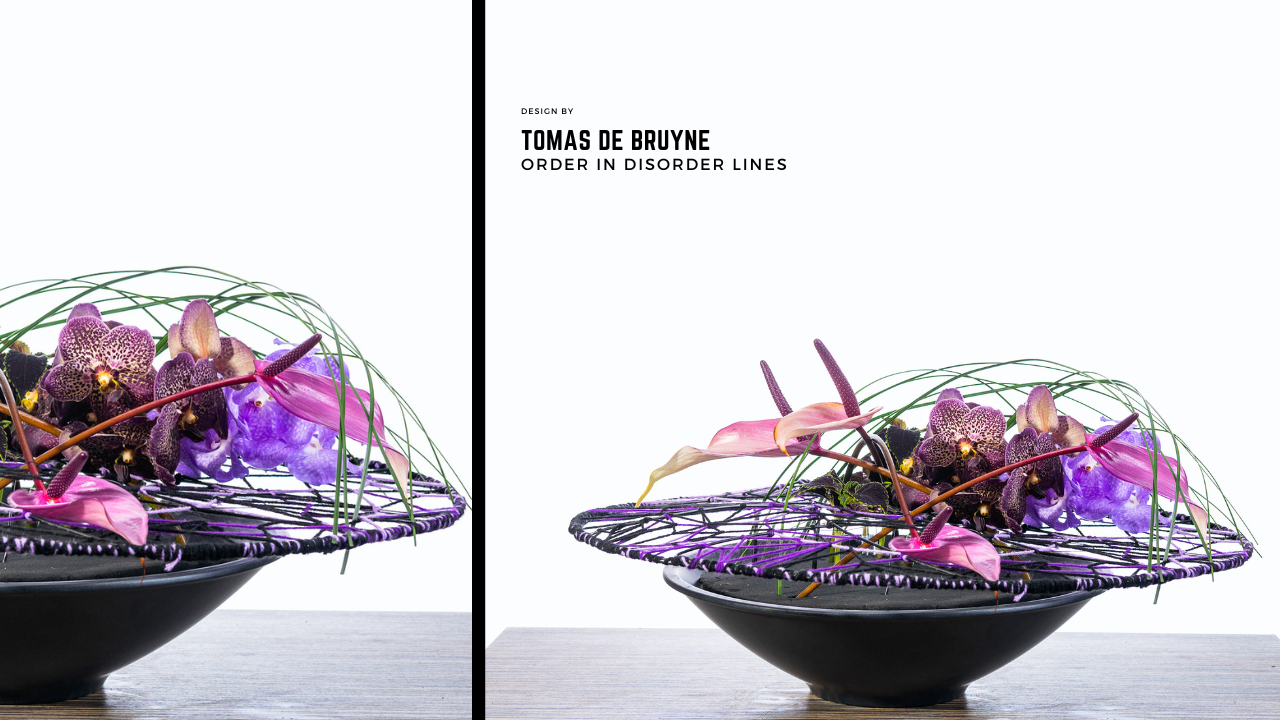
Unlock your creativity
Aug 05, 2023Beauty in Floral Lines
Inspiration from nature is infinite if you know how to approach it!
In the world of floral design, one element reigns supreme: the floral line. These lines, derived exclusively from botanical stems, hold the power to shape and structure a design, giving it direction and purpose. Understanding the distinction between floral and non-floral lines is key, as it helps us channel the true essence of this expressive element. Remarkably, floral lines do not depend on the flower heads, buds, or berries; instead, they draw attention to the stems themselves, crafting an unparalleled sense of order.
Lines serve as the backbone of a floral arrangement, defining its edges and creating a visual sense of organization. Whether they appear as horizontal, vertical, diagonal, straight, or curved, thick or thin, lines provide the much-needed structure and harmony. However, it's important to note that lines need not be limited to botanical materials alone. Non-botanical elements can also be utilized to establish order and add unique character to the arrangement.
When it comes to lines in floral design, there are two main categories: static and dynamic. Static lines exude a sense of tranquility and stillness, while dynamic lines infuse energy and movement, mirroring the natural world in all its glory.
As we dive deeper into line floral arrangements, our focus shifts solely to the visual impact and the emotions they evoke in the viewer. The designer's goal is to introduce a captivating visual tension, stimulating the senses and inviting exploration. In some cases, lines may remain hidden, concealed within closed arrangements with no transparency or a single growing point, such as radial line arrangements.
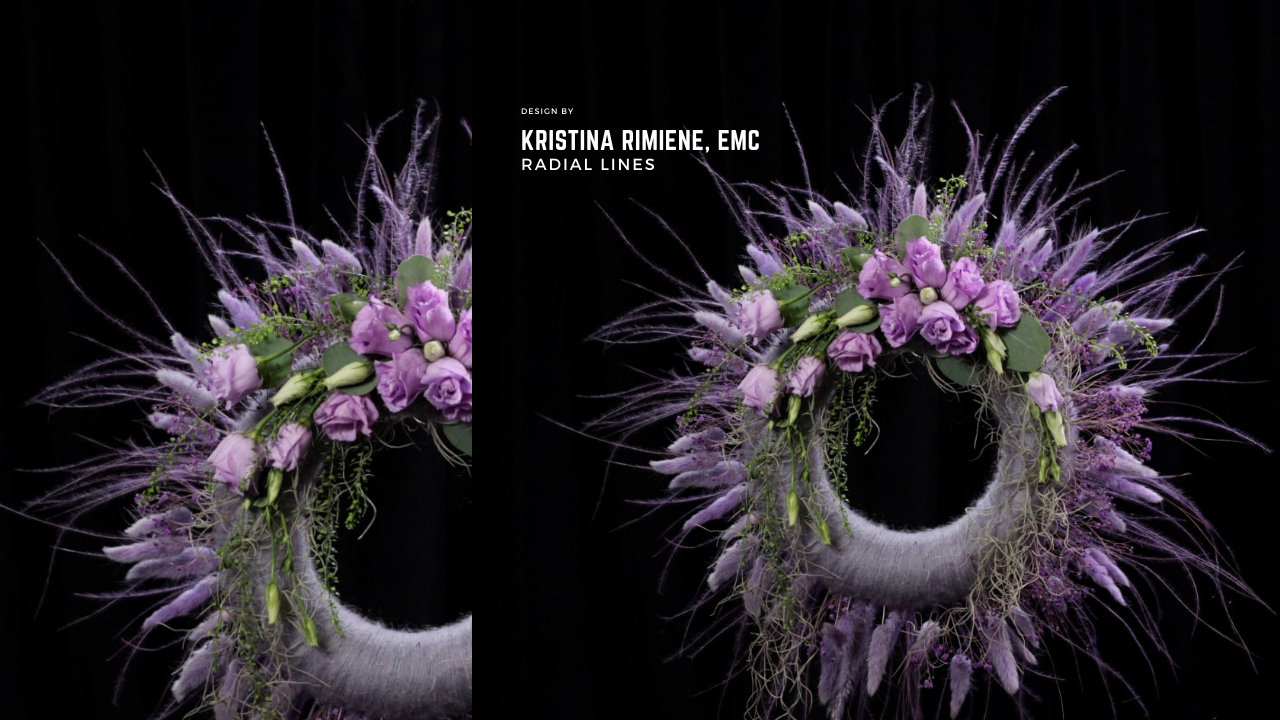
Radial lines
Picture the spokes of a wheel extending outward from a central point. radial lines radiate from a common growing or binding point, creating a sense of harmony and balance. They form a captivating expression of beauty and balance. They occur when botanical materials are arranged in a way that emanates from a central point, or towards it. The visual impact of radial lines is both striking and harmonious, making them a popular choice among designers. The meaning behind radial lines goes beyond their aesthetic appeal. They symbolise growth, radiance, and unity and bring a sense of cohesion and interconnectedness to a floral arrangement. This arrangement style often evokes a feeling of completeness and harmony. Visually, radial lines create a sense of order and direction.
The eye naturally follows the lines as they radiate outwards, leading the viewer on a visual journey that highlights the beauty and significance of the composition. Radial lines have a unique ability to guide the eye in a circular motion, encouraging the viewer to explore the entire arrangement. The lines create a harmonious flow, leading the gaze from the central point to the outer edges and back again. This movement adds a dynamic and rhythmic quality to the design, captivating and engaging the viewer.

Furthermore, radial lines add a sense of depth and dimension to the arrangement. They create a dynamic visual effect that commands attention. The symmetry and balance inherent in radial lines bring a feeling of stability and elegance to the design. It is a classic arrangement style that exudes timeless beauty and sophistication, yet that can also be interpreted in the most modern, even avant-garde manner. When incorporating such lines into your floral designs, consider the placement and orientation of the botanical materials. Experiment with different angles and stem lengths to achieve the desired visual impact. Remember to pay attention to the overall composition and balance of the arrangement, allowing the radial lines to harmonise with other design elements.
Parallel lines
Parallel Lines are multiple stems that run parallel to one another, evoking a static impression. These lines lend stability and serenity to the design, captivating the eye with their uniformity, as it is the element that offers a sense of balance and order. The meaning behind parallel lines in floral design reflects a sense of harmony and structure. The arrangement emanates a tranquil and serene energy, drawing inspiration from the clean and organised aesthetic of parallel lines in various art forms. Parallel lines symbolise stability, balance, and a sense of calm, resonating with themes of order and precision.
The visual impact of parallel lines can be observed across different artistic disciplines. In architecture, parallel lines are commonly found in building facades, where they create a sense of symmetry and rhythm. This design principle is often employed to create a visually pleasing and harmonious structure. Similarly, in interior design, parallel lines can be seen in elements such as furniture, flooring, or wall paneling. In the realm of fashion, parallel lines find expression in patterns and designs, such as stripes or linear motifs. These lines bring a structured and elegant look to garments, embodying a sense of sophistication and timeless style.
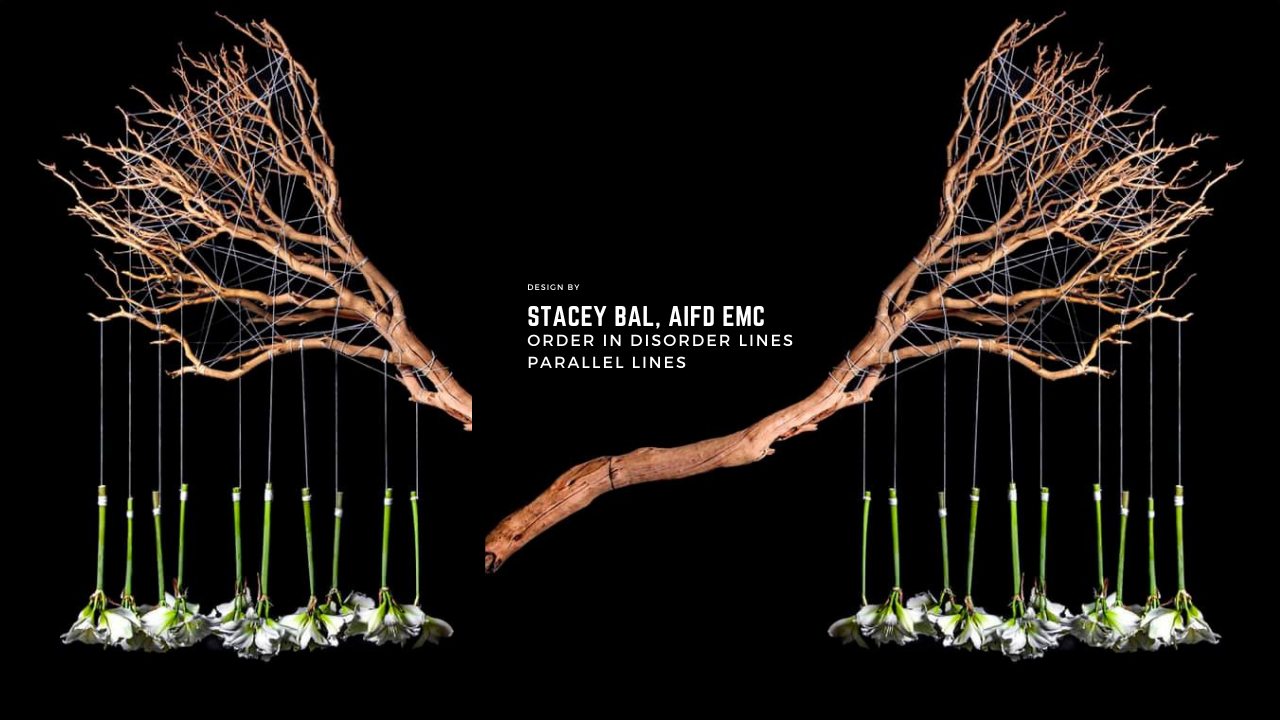
By exploring the connections between floral design and other artistic fields, we can draw inspiration and borrow design principles. Incorporating parallel lines in floral arrangements allows for a harmonious integration with architectural elements, interior decor, or fashion themes. This creates a cohesive visual narrative that resonates across different artistic realms, adding depth and sophistication to the overall composition.
When utilising parallel lines in floral design, careful attention should be given to the placement and alignment of the stems. The uniformity of the lines enhances the visual impact, while variations in height and texture can add subtle layers of interest. Consider the overall balance of the arrangement and how the parallel lines interact with other design elements, such as color, form, and texture.
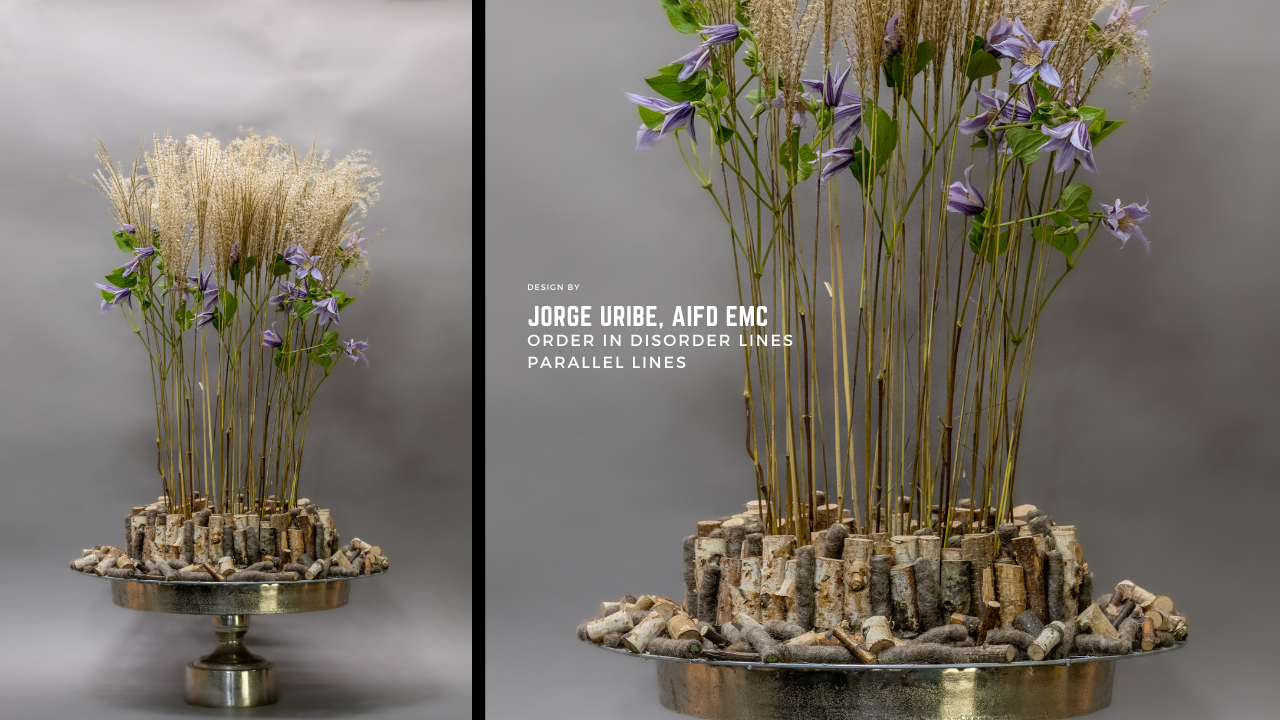
Winding lines
Imagine a dance of botanical stems, intertwining and twisting in a captivating display of fluidity and movement. These are the winding lines, an expression of dynamic motion and circling within floral design. As their name suggests, winding lines invite the viewer to embark on a journey, exploring the arrangement from various angles and immersing themselves in its flow. They evoke a sense of energy, a seemingly spiralling force that breathes life into the composition. They create an intricate movement, guiding the eye through a captivating choreography of botanical elements.
Incorporating winding lines in floral design takes inspiration from nature's own mastery. Picture the lush vines and climbers that gracefully ascend any structure, their tendrils curling and twirling in an exquisite display of organic beauty. These natural winding lines serve as a testament to the innate elegance and inherent flow found in the world around us.
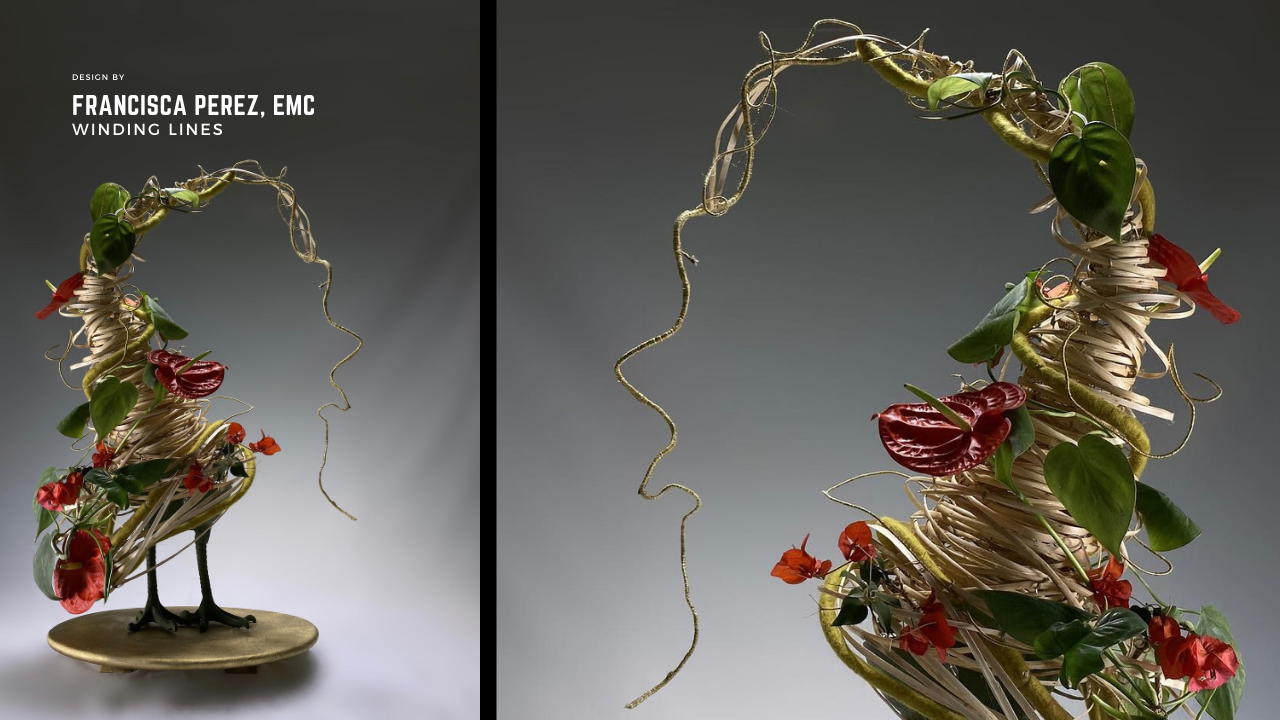
To create an inspirational floral design using winding lines, allow the stems to gracefully overlap and intertwine, forming a visual narrative that captivates and enchants. Embrace the natural curves and bends found in botanical materials, celebrating the inherent beauty in their unique forms. Consider the balance and harmony of the arrangement, ensuring that the winding lines flow effortlessly and create a harmonious dance of movement.
Nature's winding lines offer us endless possibilities for creative expression. They teach us to embrace the dynamic nature of design, inviting us to explore the limitless potential that lies within the interplay of lines and forms.

Crossing lines
Crossing line is one of the strongest visual element of a composition, whether discreet or obvious. It's one clear spot where the focus and the attention of the viewer goes towards. They create a visually captivating and impactful element within any design. When carefully placed botanicals intersect at a clear crossing point, it influences the eye and draws attention to that focal area. This intentional placement creates a dynamic composition that engages the viewer and guides their gaze towards the intersection. Whether it's through the convergence of stems, the meeting of grasses, or the intertwining of vines, the crossing point entices the viewer to explore the intricate details and subtle nuances of the floral arrangement.

If we look towards the Art, such a line arrangement is easily comparable as contribution to a composition as a focal point. In their works, for instance, through strategic placement and emphasis, artists can convey meaning, evoke emotions, and create visual harmony. The focal point acts as a magnetic anchor, inviting viewers to explore the intricacies of the artwork while contributing to its overall impact and composition. That kind of effect on the viewers can be very powerful, which is why the attention of the designer when creating crossing lines should be on connecting this element to all others involved in the design. The silhouette, proportion direction and colour all influence the final outcome and therefore the placement of the crossing line can change the way the floral expression unfolds.
Order in disorder lines
Aesthetically pleasing disorder in floral design is indeed possible. By intentionally arranging multiple stems in a conscious and harmonious disarray, a captivating sense of order emerges from the chaos. This deliberate approach creates a visually intriguing narrative that sparks curiosity and pleases the senses. The seemingly chaotic arrangement becomes an artful display that invites closer inspection and evokes a sense of delight.
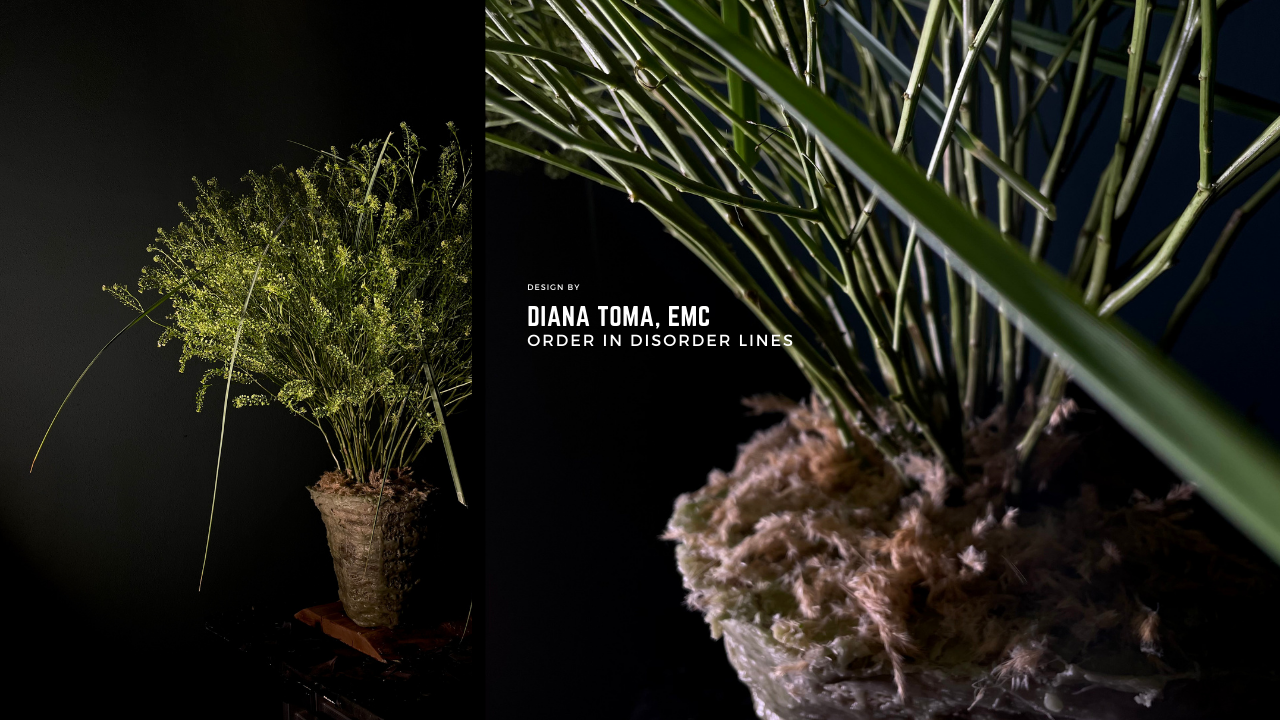
The conscious arrangement of stems in a harmonious way mirrors the organic patterns and forms found in the natural world. It can capture the essence of nature's inherent balance and bring it into the realm of artistic expression, which always elevates a designer among the rest. The floral line can reflect the organic growth patterns, the interplay of branches and foliage, and the seemingly random yet purposeful arrangement of elements in nature. Craftsmanship and good execution is needed in order to contain the design into an aesthetic standard of beauty and for sure the possibilities of creating with this element is infinite on its own.
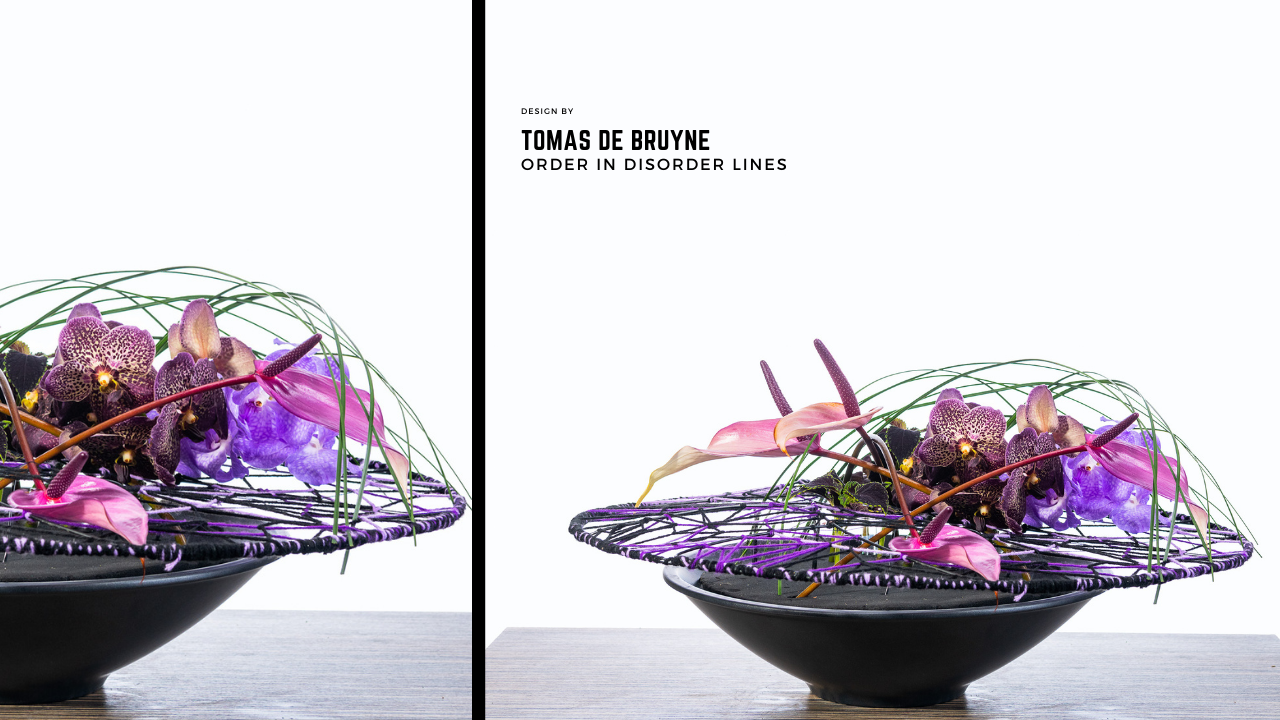
Floral lines hold boundless potential, capable of transforming a mere arrangement into a breathtaking work of art. Embrace their power, experiment with different line categories, and create unique designs. Floral lines can make or break a design!
You can dive deeper into studying line arrangement though our MAGIC OF LINES COURSE! Video lessons and demonstrations, 7 types of lines analysed in detail, "how to?" downloadable documents!
Don't miss a beat!
New blogs, course offerings and what we are up to delivered to your inbox!
We hate SPAM. We will never sell your information, for any reason.

